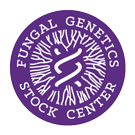Strain: Neurospora crassa
FGSC #2576
Reporting Genes: cyh-1
Species: crassa
Allele: 54(r)
Mutagen: UV
Depositor: WK
Linkage Group: IR
Mating Type: A
Genetic Background: SL
ref1: Neuhauser et al Molec Gen Genet 106:180 1970, https://doi.org/10.1007/bf00323837
ref2: Pongratz & Klingmuller Mol Gen Genet 124:35g 1973, https://doi.org/10.1007/bf00267664
Genes
